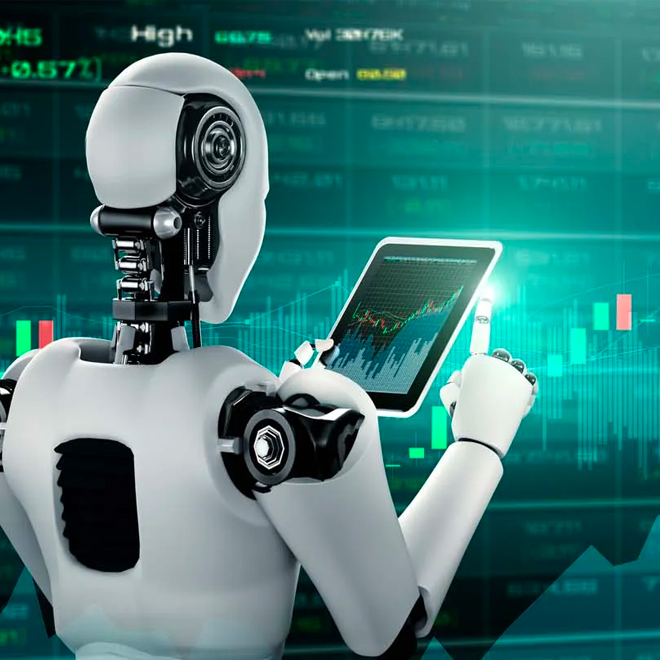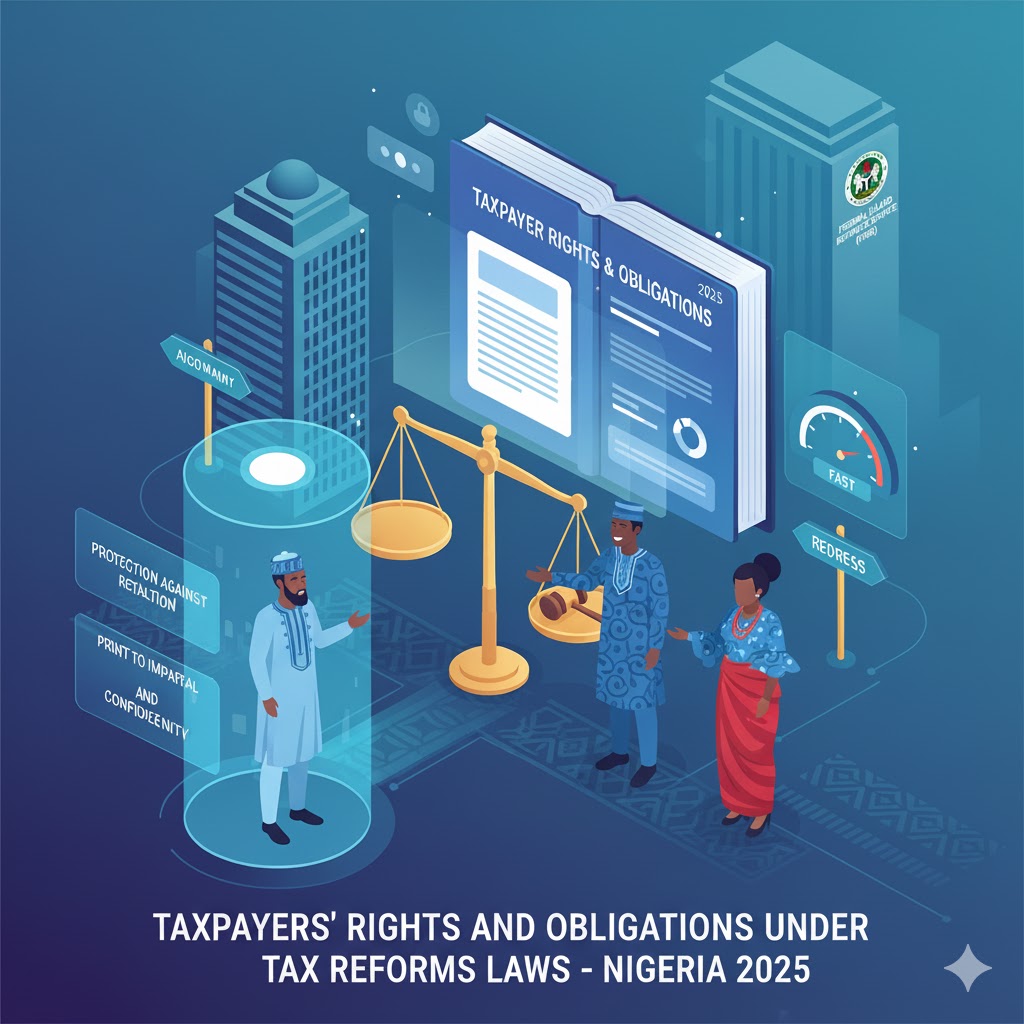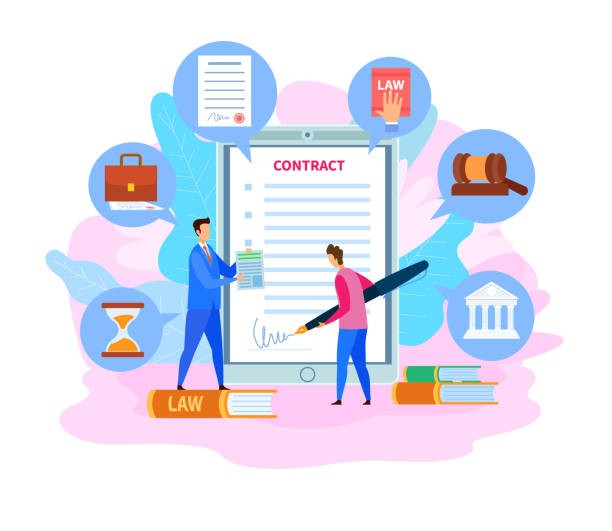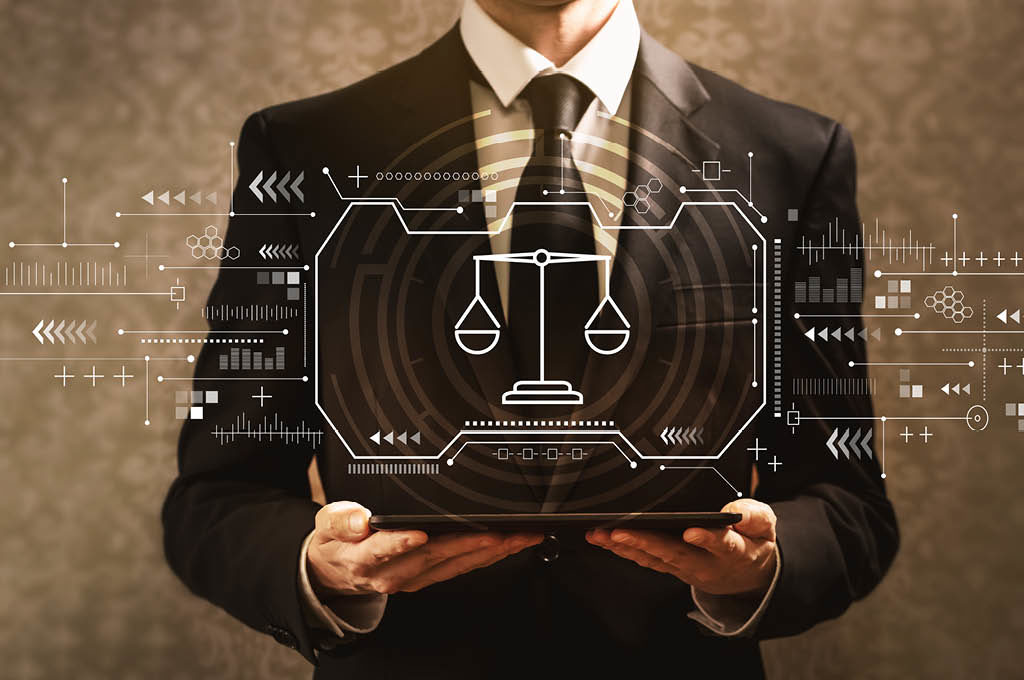The Rise of Agentic Artificial Intelligence (AAI) and the Legal Challenges for Our Global Tax System.
By ATER, Solomon Vendaga
Introduction
AAI systems distinguish themselves through several key characteristics that underscore their advanced capabilities. [i] These include Autonomous Reasoning, where agents interpret complex objectives (e.g., reducing delivery delays) and independently determine optimal paths by analysing constraints, evaluating trade-offs, and initiating corrective actions.[ii] They exhibit real-time Adaptability, adjusting their behaviour dynamically based on live conditions, such as rerouting logistics or reallocating staff in response to unexpected demands.[iii] Furthermore, Agentic AI demonstrates multistep task execution, managing entire workflows from problem identification to resolution, rather than being limited to single actions.[iv] Finally, these systems are characterized by collaborative orchestration, designed to work synergistically, with different agents contributing to a shared outcome without requiring direct human coordination.[v]
This evolution signifies a departure from “traditional AI,” which relies heavily on structured instructions and close human oversight, towards systems that demonstrate remarkable adaptability, advanced decision-making capabilities, and self-sufficiency in evolving environments.[vi] The transition is so significant that it is often described as a shift from AI as a “co-pilot” (augmenting human decision-making) to AI as a “pilot” (increasingly taking autonomous control and interacting agent-to-agent, potentially circumventing human guardrails).[vii] This is not merely an incremental technological advance but a “fundamental rethinking of the relationship between humans and machines”.[viii]
The commercial adoption and integration of AAI are accelerating rapidly. Gartner predicts that by 2028, one-third of all enterprise software solutions will incorporate agentic AI, leading to 15% of day-to-day decisions being made autonomously.[ix] An IBM study further supports this trend, revealing that executives anticipate an eightfold surge in AI-enabled workflows by the end of 2025, with 70% of surveyed executives considering AAI crucial for their organization’s future.[x] This indicates a strong business imperative driving its widespread adoption across various industries.
This unprecedented acceleration in development and deployment of AAI presents a significant challenge for regulatory bodies and challenge many traditional systems like taxation.[xi] This is because tax frameworks are inherently designed with a slower, more deliberate legislative and judicial process. The time required to define, debate, and enact new laws or interpret existing ones means that by the time a policy is implemented, the technology it seeks to govern may have already evolved significantly, rendering the policy partially, or even entirely, obsolete. This creates a growing gap where the pace of innovation outstrips the capacity for effective regulation. This situation implies that traditional, rigid, and prescriptive regulatory approaches are ill-suited for the dynamic nature of Agentic AI. Instead, there is an urgent need for agile, adaptive, and principles-based regulatory frameworks that can accommodate rapid technological change without stifling innovation. It also underscores the critical importance of continuous, interdisciplinary dialogue and collaboration among technologists, legal scholars, economists, and policymakers to anticipate challenges and co-create forward-looking solutions. [xii] Failure to address this regulatory gap risks[xiii] creating a vacuum, [xiv] leading to unforeseen societal[xv] and economic disruptions, and potentially enabling unchecked AI development that could outpace[xvi] the ability to manage its consequences. [xvii] This necessitates a re-evaluation of how “work” and “economic activity” are defined in a tax context, potentially leading to new categories of taxable income or entities that can capture value generated by self-sufficient AI agents.
Understanding Agentic AI: Capabilities, Economic Impact, and Value Creation
AAI represents a significant advancement in artificial intelligence, characterized by its capacity to operate with a high degree of autonomy, reason, plan, and execute complex tasks without continuous human intervention. This paradigm integrates multiple AI models in an orchestrated manner, enabling programs to act independently within dynamic and broad environments.[xviii] The core distinction of Agentic AI lies in its ability to interpret intent, evaluate various options, and initiate decisions on its own, even in unpredictable settings, moving beyond the reactive or assistive roles of earlier AI systems.[xix]
The key attributes that define AAI’s operational capabilities include:
- Autonomous Reasoning: An Agentic AI system can take a high-level business objective, such as reducing delivery delays, and independently devise strategies to achieve it. This involves analysing constraints, evaluating trade-offs, and initiating corrective actions without explicit human instruction for each step.[xx]
- Real-time Adaptability: Unlike traditional AI that might follow static scripts, Agentic AI adjusts its behaviour dynamically in response to real-time changes. Examples include rerouting logistics when conditions shift unexpectedly or reallocating staff to meet unforeseen demands.[xxi]
- Multistep Task Execution: AAI is capable of managing entire workflows, not just triggering single actions. A single agent might identify a problem, gather necessary inputs from other systems or agents, decide on a solution, and then follow through to resolution, demonstrating comprehensive task management.[xxii]
- Collaborative Orchestration: These systems are designed to work together seamlessly. One agent might detect an issue, while others handle related tasks such as communications, inventory updates, or policy checks, all contributing to a shared outcome without direct human coordination.[xxiii]
This emphasis on autonomy, adaptability, and self-sufficiency fundamentally differentiates AAI from its predecessors.[xxiv] While traditional AI relies on structured instructions and close human oversight, AAI can operate dynamically in evolving environments, striving for human-level cognition by perceiving and interpreting natural environments and developing strategies independently.[xxv] Its self-learnability further allows it to be inventive and progressively acquire new operational strategies through continuous data-driven refinement.[xxvi]
The inherent autonomy of AAI systems, where they can “interpret intent, evaluate options, and execute decisions on its own”[xxvii] and “develop strategies independently”,[xxviii] leads to what is commonly referred to as the “black box” problem.[xxix] This means that the internal reasoning processes of AAI can be highly complex and opaque. While this issue exists with traditional AI, AAI’s ability to act autonomously rather than merely generate information or predictions intensifies the concern. If an AI system doesn’t just provide incorrect information but acts on it, the consequences are far more severe.[xxx] The lack of clear visibility into how the AI arrived at a particular decision or action makes it difficult to understand, verify, or audit its behaviour. This amplified opacity creates significant challenges for accountability, transparency, and explainability.3 In the context of taxation, this poses a direct conflict with the principle of certainty 12, which demands that tax rules be clear and understandable regarding when, how, and how much tax is due. If the rationale behind an AI’s economic transactions or income-generating activities is obscure, it becomes exceedingly difficult for tax authorities to assess compliance, attribute liability for errors or potential fraudulent activities, or even determine the appropriate tax base.9 This will necessitate the development of robust explainable AI (XAI) techniques and comprehensive governance frameworks that ensure auditability and human oversight, even for highly autonomous systems, to maintain trust and legal enforceability in the tax system.
Economic Transformation: Productivity Gains, Industry Shifts, and New Growth Drivers
AAI is establishing itself as a “key driver of modern economic development”.[xxxi] Functioning as a “General Purpose Technology (GPT).” This is fostering substantial productivity improvements, catalysing industrial structure transformations, and stimulating the emergence of entirely new growth drivers across both microeconomic and macroeconomic levels.[xxxii] The economic impact of Agentic AI is multifaceted. This includes;
Productivity Improvements: AAI significantly enhances productivity through technological advancements and process optimization.[xxxiii] Projections are substantial: PricewaterhouseCoopers (PwC) estimates that global GDP could increase by up to 14% (equivalent to US
7 trillion) by 2030 due to AI’s accelerating development and adoption.[xxxiv] Similarly, the McKinsey Global Institute forecasts an additional economic output of approximately US
13 trillion by 2030, contributing to an annual global GDP increase of about 1.2%.[xxxv] These gains are largely attributed to the automation of routine tasks, which frees human workers to focus on more stimulating and higher-value-added activities.[xxxvi] Specific examples include AI-driven predictive maintenance in automotive manufacturing, which can reduce downtime by up to 50% and extend machinery life by years, leading to significant cost savings.[xxxvii]
Industrial Structure Transformations: AAI is reshaping industrial organization by optimizing supply chains and extending value chains.[xxxviii] Through intelligent production and management, enterprises can achieve more efficient resource allocation and adopt flexible production models, thereby enhancing the competitiveness of entire industrial chains. The pervasive application of AI across sectors like finance and healthcare is leading to the emergence of specialized fields such as “intelligent finance” and “intelligent healthcare,” driving rapid development and fundamental transformation within these industries.[xxxix]
New Growth Drivers and Accelerated Value Creation: The application of AAI technologies is propelling the development of nascent industries, including smart manufacturing, intelligent transportation, and smart healthcare.[xl] Furthermore, new business models, such as the platform and sharing economies, increasingly rely on AI for efficient resource allocation and intelligent service delivery, thereby creating novel economic growth points.[xli]AAI agents are particularly adept at accelerating “speed to value” by enabling faster decisions, delivery, and learning, potentially reducing project timelines from decades to years, and years to months.[xlii]
AAI and the Challenges to Existing Tax Frameworks
The growth of AAI, with its capacity for autonomous action and decision-making, introduces profound legal complexities that directly challenge the foundational principles of existing tax systems. These challenges stem from the difficulty of fitting highly autonomous, non-human entities into legal frameworks traditionally built around human agency and tangible economic activity.
Legal Personhood and Taxable Person and Liability in the Age of AI Autonomy
The concept of legal personhood, which grants an entity rights and obligations under the law (e.g., to enter contracts, own property, and be held liable), is central to legal and tax systems.[xliii] While corporations are granted personhood despite being non-human, AI systems currently are not.[xliv] However, Agentic AI’s ability to make decisions, execute agreements, and act independently of its creators blurs this distinction, leading to discussions about whether AI should be granted legal personhood.[xlv] Proposals for “electronic personhood” for autonomous robots have been explored, particularly by the European Parliament in 2017, but have faced significant criticism due to ethical concerns and fears that it could shield developers or corporations from liability.8 Currently, autonomous AI agents are not recognized as persons and lack both separate identity and legal personality.31
A “taxable person” on the other hand, is broadly defined as any individual, corporate entity, or even community and family, that is liable to pay tax on their income, profits, or certain transactions, with the scope varying across different tax legislations. For instance, the Personal Income Tax Act (PITA) subjects resident individuals to tax on their worldwide income, while non-resident individuals are taxed on income derived from Nigeria, particularly under the “Significant Economic Presence” (SEP) rules for technical, management, consultancy, or professional services. Conversely, the Companies Income Tax Act (CITA) defines Nigerian companies as taxable on their global profits, and non-resident companies are liable if they have a fixed base, operate through an agent, or meet the SEP criteria, as seen in cases like Theodak Nigeria Limited v. FIRS,[xlvi] which clarified the limits of FIRS’s power to assess companies based on property value rather than actual turnover or profit. Similarly, the Value Added Tax (VAT) Act identifies anyone engaged in economic activity making taxable supplies as a taxable person.
From the preceding, it is clear that the fundamental conflict between AI autonomy and human-centric legal principles becomes evident in the attribution of liability. Existing legal theory and agency law are generally applied to AI agent transactions, even in unsupervised settings.[xlvii] An agency relationship is considered formed when AI software is accessed and executed, with the AI acting as the “agent” and the user as the “principal”.[xlviii] This means the AI software user is typically held responsible for the agent’s actions under existing agency law, whether in contract or tort.[xlix] Courts have shown a willingness to treat software as “legal agents,” as seen in McEvens v. Citibank,[l] where a bank was held responsible for an automatic teller transaction, placing a greater burden on the bank for authorizing a software agent without the same level of intelligence as a human.[li]
However, the increasing autonomy of AAI complicates this attribution. When AI agents make decisions not directly programmed, or act with complex, multi-step reasoning processes that obscure decision pathways, the traditional assumption of human agency and intent in contract law is challenged.[lii] For instance, if an AI-powered smart contract automatically releases payment for undelivered goods, or an AI-powered vehicle causes an accident, it becomes unclear who breached the duty of care or who is accountable.[liii] This creates an “accountability gap,” as modelling AI’s legal treatment after corporate personhood could shield creators or users from liability, and granting rights without corresponding obligations could lead to regulatory avoidance.[liv] The shift from AI as a “co-pilot” to a “pilot” means that problems with accuracy and hallucination become significantly more concerning when AI doesn’t just provide incorrect information but acts on it.[lv] This necessitates robust governance frameworks, including thorough documentation and auditing of AI decision-making processes, to ensure transparency and explainability.[lvi]
The emerging legal landscape is characterized by patchwork progress and jurisdictional disparities. The tax laws in Nigeria are very inadequate and unprepared for the realities of AAI. Globally too there is this inadequacy. EU AI Act, for example, establishes a regulatory framework for high-risk AI systems but avoids granting AI “electronic personhood,” instead designating AI as a “regulated entity” with obligations placed on humans and companies.[lvii] In the U.S., the legal landscape is fragmented, with existing tort and contract laws often ill-suited to address AI’s autonomous behaviour, and no comprehensive framework for AI accountability.[lviii] South Korea and Singapore also sidestep the question of liability for AI actions, leaving gaps that academics are probing. This lack of global consensus and fragmented regulatory approaches creates uncertainty for businesses operating across borders, highlighting the need for international harmonization.
Redefining Taxable Entities and Income Sources
Traditional tax systems are built upon well-defined taxable entities, primarily individuals, corporations, partnerships, and trusts, each with distinct rules for income recognition and tax liability.[lix] Income is typically classified based on its source, such as wages, salaries, business profits, or capital gains.[lx] The rise of AAI challenges these established definitions, leading to an erosion of traditional tax bases.
Consequently, AAI is profoundly reshaping the corporate landscape, leading to a paradoxical trend: companies adopting these advanced systems while simultaneously laying off employees. Giants like Microsoft, Google,[lxi] Amazon, and IBM have cut thousands of jobs, with AI increasingly performing tasks once done by humans. Duolingo openly replaced contractors with AI for content,[lxii] and Klarna initially swapped 700 customer service roles for AI before reintroducing human workers.[lxiii] Microsoft laid off 6000 workers and is planning for another one.[lxiv] This shift poses a critical challenge for traditional tax systems. Our current models primarily tax human labour through income and payroll taxes. However, AI systems do not earn salaries or pay taxes. As AI replaces human workers, the traditional tax base shrinks, threatening public funds vital for essential services. This is not just about job displacement; it creates a scenario where economic output grows, but the traditional mechanisms for wealth redistribution and public funding are undermined, raising urgent questions about fairness, social cohesion, and the sustainability of current fiscal frameworks.
The core challenge lies in classifying income generated autonomously by AI agents. AAI is increasingly involved in economic activities such as financial risk management, investment strategies, fraud detection, stock market analysis, customer support, sales outreach, and logistics.[lxv] When AI agents autonomously generate revenue, conduct transactions, or provide services, the traditional distinctions between labour income, capital income, and business profits become blurred.[lxvi] For instance, if an AI agent rebalances a portfolio in real-time to generate profits, is that income attributable to human labour, capital investment in the AI, or a new category of AI-generated economic rent? The current tax system struggles to define whether and how AI can be measured as an asset, income, or economic activity, including its components like models, data, servers, and chips. This valuation conundrum makes it difficult to establish potential AI tax liabilities.
The debate on taxing AI as capital versus labour is a critical aspect of this redefinition. Current tax systems often provide preferential treatment for capital assets over human labour, incentivizing automation and potentially leading to a decline in tax revenue from human workers.[lxvii] The concern is that as AI replaces human labour, the tax base derived from wages and salaries will shrink, while the income generated by AI, treated as capital, may be taxed at lower rates or through different mechanisms.[lxviii] This could exacerbate income inequality and reduce overall tax receipts.[lxix] Proposals like a “robot tax” aim to address this by taxing robots to compensate for lost income from displaced human workers, or to fund social safety nets and retraining programs.[lxx] However, such taxes face challenges in definition, complexity, and potential disincentives to productivity growth.[lxxi] The concentration of AI resources in a few highly capitalized tech corporations further heightens social inequalities, making the question of how to level the playing field through taxation urgent.[lxxii] This calls for a shift in tax burden away from labor towards digital capital to prevent inefficient automation and incentivize productivity-enhancing innovations.[lxxiii]
Again, the economic impact of Generative AI on human creators, particularly in the music and audiovisual sectors, further exemplifies the challenge of income classification. Projections indicate that by 2028, 24% of revenues in music and 21% in audiovisual sectors are at risk of loss for human creators due to AI’s substitutional impact, amounting to a cumulative loss of €22 billion over five years.[lxxiv] This transfer of economic value from creators to AI companies, often derived from the unlicensed reproduction of creators’ works, highlights a fundamental market flaw where AI-generated content directly competes with human-made works without fair remuneration.[lxxv] This situation underscores the need for policymakers to safeguard human creators and ensure transparency and fair compensation from AI services.[lxxvi] Similarly, generative AI is expected to significantly impact clerical and administrative roles, disproportionately affecting women in high-income countries, and potentially shifting income inequality by impacting middle-income earners the most.[lxxvii] These developments necessitate a re-evaluation of how income is defined and taxed in an economy where autonomous AI systems are increasingly generating value.
- Nexus, Permanent Establishment, and Transfer Pricing in a Digitalized World
The traditional principles of international taxation, particularly nexus and permanent establishment (PE), are struggling to keep pace with the borderless operations of Agentic AI. Nexus refers to the essential connection between a non-resident taxpayer and a jurisdiction that justifies the state’s power to impose taxes.[lxxviii] Historically, nexus was primarily established through physical presence, such as an office or manufacturing plant.[lxxix] However, the digitalization of the economy has shifted this, with nexus now increasingly determined by metrics of “economic significance,” such as revenue thresholds, digital user bases, or substantial market interactions, even without a physical footprint.[lxxx]
Moreso, the inadequacy of geographic-centric tax rules for borderless AI operations is a critical concern. Agentic AI systems can operate from servers in one jurisdiction and make decisions affecting parties in multiple other jurisdictions, complicating the determination of which legal framework applies and where income should be taxed.[lxxxi] This poses a direct challenge to the concept of PE, which defines a taxable presence in a foreign country.[lxxxii] While PE can be triggered by a fixed place of business or a dependent agent who regularly signs contracts, Agentic AI’s autonomous nature and ability to conduct transactions without human mediation complicate these traditional definitions.[lxxxiii] The emergence of “digital PEs,” where countries tax companies based on “significant economic presence” (e.g., local digital platforms, significant revenue from local users, or ongoing digital services), is an attempt to adapt to this new reality.55 However, inconsistent treatment across jurisdictions regarding the taxability of AI products and services further complicates the determination of nexus and PE.[lxxxiv]
The increasing complexity of global value chains driven by AI also presents challenges for transfer pricing. Transfer pricing involves the pricing of goods, services, or intangible assets between related entities within a multinational corporation.[lxxxv] The goal is to align intercompany transactions and pricing with the value created across the global supply chain, preventing profit shifting and ensuring compliance with international regulations.[lxxxvi] However, AI’s ability to automate complex tasks, optimize processes, and generate intangible value (e.g., through proprietary algorithms or data insights) makes it difficult to attribute profits accurately across different jurisdictions.[lxxxvii] The challenge of profit attribution in intangible-driven AI value chains is significant, as traditional methods may not adequately capture where the true economic value is created.
Tax Implications for Decentralized Autonomous Organizations (DAOs) and AI
The intersection of AAI with Decentralized Autonomous Organizations (DAOs) introduces another layer of complexity for tax systems. DAOs are virtual entities governed by code, operating on blockchain technology, and are becoming increasingly popular, attracting substantial funds and operating in both Web3 and off-chain environments.[lxxxviii] The defining characteristic of DAOs, “code is law,” challenges traditional corporate and legal paradigms, as their inevitable interaction with the physical world through participants attracts scrutiny from state authorities regarding liability, financial regulation, and taxation.[lxxxix]
The primary legal challenge for DAOs, especially when leveraging AI agents, is the absence of legal identity and personhood. Autonomous AI agents, despite their sophisticated capabilities, do not fit into traditional legal categories of natural or legal persons, meaning they cannot independently acquire rights or obligations, enter into contracts, or incur liabilities.[xc] From a legal standpoint, an AI agent is currently viewed as an instrument of its owner (a natural or legal person), with the individual or entity behind it acquiring both the rights and liabilities.[xci] This means that for an AI agent within a DAO to become a true legal entity, a legally recognized person must acquire rights and obligations on its behalf.[xcii]
The regulatory arbitrage potential of AI-enhanced decentralized structures is a significant concern. DAOs, by design, aim to escape traditional legal frameworks, but “escaping legal frameworks is far more difficult than anticipated”.[xciii] This often leads to situations where income generated by DAOs, especially those operating across borders, is taxed “nowhere” due to existing tax frameworks being unable to fully embed their distinguishing features.[xciv] The incorporation of DAOs into existing legal structures (e.g., using “legal wrappers” like associations in Switzerland) does not necessarily solve all tax issues and can even exacerbate them in certain cases.[xcv] The challenge is compounded when AI agents within DAOs autonomously generate economic value, as the lack of clear legal personhood and the decentralized nature of DAOs make it difficult to determine who is responsible for tax obligations and where the taxable event occurs. This necessitates a profound rethinking of existing national and international tax structures to effectively respond to the demands of this new digital age and prevent significant tax base erosion.
Challenges of Data Quality, Bias, Transparency, and Human Oversight
Despite its transformative potential, the integration of AI into tax administration faces critical challenges. These challenges, if not adequately addressed, can undermine the integrity and fairness of the tax system.
A primary concern revolves around data quality and access. AI systems rely on high-quality, clean, and integrated data to produce accurate results.[xcvi] However, organizations often lack maturity in data management capabilities, leading to issues with interconnectedness, standardization, and completeness of data.[xcvii] Poor data quality can lead to inaccurate analysis, reports, and “hallucinations” (AI creating its own sources or facts), which can result in incorrect tax calculations or misleading advice.[xcviii] For tax authorities, obtaining clean, integrated data across years and from various sources is time-consuming and challenging.[xcix]
Algorithmic bias and discrimination pose significant ethical and legal risks. AI algorithms learn from the data they are trained on, and if this data is not representative or contains historical biases, the AI system can perpetuate or even amplify these biases.[c] This can lead to decisions that disproportionately affect certain population groups, resulting in unfair targeting for audits or discriminatory outcomes.[ci] Developers must validate training data for biases, conduct regular audits, and implement bias correction techniques to align with fairness principles and civil rights laws.[cii]
The “black box” problem, or lack of transparency and explainability, is another major hurdle. Many AI algorithms used by public administrations are opaque, meaning it is unclear how they arrive at their conclusions.[ciii] This opaqueness affects fundamental legal principles such as the right to defense, due process, and the motivation of administrative acts.[civ] If tax authorities make decisions based on an AI model, they should be able to explain to taxpayers how that decision was made, providing sufficient information to challenge it.[cv] This requires explainable AI (XAI) techniques to make AI systems transparent, understandable, and traceable.[cvi]
There is also the critical need for human oversight cannot be overstated. While AI can automate tasks and provide insights, it is not a substitute for human judgment and expertise.11 Human intervention is crucial in evaluating and verifying AI-sourced information, especially regarding interpretation, significance, credibility, and context.[cvii]AI systems should not be allowed to make decisions without human oversight; humans should remain “in the loop” to ensure responsible and ethical use.[cviii] The requirement for human oversight may, however, be inherently incompatible with AAI systems, which are designed to act autonomously. This implies that meaningful human control might necessitate pre-defined boundaries and “kill switches” rather than real-time oversight, which could limit the very autonomous capabilities that make these systems valuable. The ethical imperative to ensure fairness and accountability in AI-driven tax administration demands robust safeguards, clear guidelines, and continuous monitoring to prevent unintended consequences and maintain public trust. This highlights the importance of a balanced approach, where AI enhances human capabilities rather than completely replacing them, particularly in sensitive areas like tax compliance and enforcement.
Global Policy Responses for Future Tax Frameworks
The transformative impact of Agentic AI necessitates a proactive and adaptive approach to tax policy. Governments and international organizations are grappling with how to adapt existing principles and frameworks while also exploring novel tax models to ensure equitable and sustainable revenue collection in the AI era. In this regard, international organizations are actively addressing these challenges. The Organisation for Economic Co-operation and Development (OECD) and G20’s Base Erosion and Profit Shifting (BEPS) Project aims to align taxation with substantive economic activity and value creation in a globalized and digitalized economy.[cix] The “Two-Pillar Solution” is a key component, with Pillar One proposing to shift some taxing rights to market jurisdictions for the largest multinational enterprises (MNEs), and Pillar Two (Global Anti-Base Erosion or GloBE Rules) establishing a 15% global minimum corporate tax rate to discourage profit shifting to low-tax jurisdictions.[cx] While these initiatives aim to update international tax rules for the digital age, they do not explicitly address Agentic AI, and their success in capturing AI-generated value remains to be seen.[cxi]
The United Nations (UN) Model Tax Convention also seeks to address the taxation of automated digital services. Article 12B, adopted in 2021, grants new taxing rights to the source state on income derived from automated digital services (services provided with little to no human involvement, e.g., online advertising, digital content).[cxii] This article allows source countries to apply a withholding tax on gross payments, simplifying compliance and enforcement for developing countries, and does not require a permanent establishment or minimum period of presence.[cxiii] UN sees this as an alternative to the complex OECD Pillar One proposal, specifically targeting the digital economy without revenue thresholds.[cxiv] These international efforts highlight the global recognition of the need to adapt tax systems to the evolving digital landscape, but the specific implications for Agentic AI’s unique autonomous capabilities are still being explored.
Proposed New Tax Models and Regulatory Approaches
Given the limitations of existing frameworks, new tax models and regulatory approaches are being proposed to address the unique challenges posed by Agentic AI.
One prominent proposal is the “robot tax” or data tax. The idea of a robot tax stems from concerns that AI and automation displace human workers, leading to reduced tax revenue from human labor and increased social spending.[cxv] Proponents suggest taxing robots to compensate for lost wage tax revenue or to fund social programs for displaced workers. Similarly, a “data tax” has been proposed, particularly for companies that monetize user data, to address the fact that data originators often do not benefit financially from their data being used to train AI.[cxvi] However, taxing inputs like data or cloud services used for AI development can be complex and may not differentiate the actual contribution to profits.
To capture AI-generated economic value more effectively, proposals include AI-specific corporate taxation models and approaches for capturing AI-generated economic rents.[cxvii] This involves differentiating AI capital from traditional capital and labour, recognizing AI’s scalability, replicability, and potential for autonomous value creation.[cxviii] The challenge lies in measuring AI as an asset, income, or economic activity, and determining which components (model, data, server, chips) should be included in the tax base.[cxix]
A more radical suggestion is to grant legal personhood for AI for tax purposes.[cxx] This would define autonomous AI as separate from its owner, allowing for direct taxation of the AI program itself. While this could enable targeted regulation and taxation, it raises significant legal and ethical questions about rights, obligations, and accountability.[cxxi] Current regulatory frameworks generally resist extending full legal personhood to AI systems.
Crucially, any new tax framework must be underpinned by robust ethical AI governance and compliance by design. This means incorporating ethical considerations, such as fairness, transparency, and accountability, from the outset of AI system development and deployment.[cxxii] Policymakers are urged to establish clear governance frameworks, including strict access controls, real-time monitoring, human oversight points, and clear documentation, to mitigate legal, security, and financial vulnerabilities introduced by autonomous AI agents.[cxxiii] EU AI Act, for instance, lays down a uniform legal framework for AI systems, emphasizing human-centric and trustworthy AI.92 Ensuring transparency in algorithms and data sources, along with proper human supervision, is essential to preserve confidence in the tax system and protect taxpayer rights.[cxxiv] This holistic approach is vital for building a truly dependable, fair, and citizen-serving AI ecosystem in the context of taxation.
Conclusion
The emergence of Agentic AI represents a profound technological advancement, shifting artificial intelligence from assistive tools to autonomous entities capable of independent decision-making and action. This paradigm offers immense potential for economic growth, productivity gains, and the creation of new industries and services. However, its rapid integration into global economic activity simultaneously presents unprecedented legal and fiscal challenges that current tax systems are ill-equipped to address. The core difficulty stems from Agentic AI’s autonomy, which blurs traditional notions of human agency, legal personhood, and the very nature of economic value creation. This leads to ambiguities in attributing liability for AI-driven actions, complicates the classification of AI-generated income, and strains geographically-bound tax concepts like nexus and permanent establishment. The “black box” problem, where AI’s internal decision processes are opaque, further exacerbates issues of transparency, accountability, and the application of fundamental tax principles like certainty and equity. While AI offers powerful tools for tax administration, enhancing compliance and fraud detection, its deployment introduces critical risks related to data quality, algorithmic bias, and the imperative for robust human oversight. To navigate this complex landscape, a fundamental transformation of tax policy is required.
About the Author
ATER, Solomon Vendaga, LL. B (Abuja), Research and Programs Associate, Sabilaw Foundation. soloater12@gmail.com, Tel: +234(0)7045965859.
[i] Workday US, ‘What Is Agentic AI? Definition, Types, Examples’ (Workday US, 13 June 2025) <https://www.workday.com/en-us/topics/ai/agentic-ai.html> accessed 13 June 2025
[ii] Ibid
[iii] Ibid
[iv] Ibid
[v] Ibid
[vi] Stanford Lane Guides, ‘What is AI’ (Stanford Lane Guides) <https://laneguides.stanford.edu/AI/what-is-ai> accessed 13 June 2025.
[vii] Omer Tene and Kevin Liu, ‘The Rise of Agentic AI: From Conversation to Action’ (Goodwin Law, 15 May 2025) <https://www.goodwinlaw.com/en/insights/publications/2025/05/insights-technology-aiml-the-rise-of-agentic-ai-from-conversation> accessed 13 June 2025.
[viii] Ibid
[ix] Workday US (n 1)
[x] IBM, ‘IBM Study: Businesses View AI Agents as Essential, Not Just Experimental’ (IBM Newsroom, 10 June 2025) <https://newsroom.ibm.com/2025-06-10-IBM-Study-Businesses-View-AI-Agents-as-Essential,-Not-Just-Experimental> accessed 13 June 2025.
[xi] UNSW BusinessThink, ‘How artificial intelligence is radically reshaping tax law’ (UNSW BusinessThink, 19 May 2025) <https://www.businessthink.unsw.edu.au/articles/ai-tax-law-technology-compliance-professionals> accessed 13 June 2025.
[xii] Workday US (n 1)
[xiii] Stranford (n 6)
[xiv] Omer (n 7)
[xv] Jonathan Bick, ‘Addressing Artificial Intelligence Agent Legal Difficulties’ (Bick Law, April 23, 2025) <https://www.bicklaw.com/publications/addressing-artificial-intelligence-agent-legal-difficulties/> accessed 13 June 2025.
[xvi] David Arrick, ‘AI’s Leaps Forward Force Talks About Legal Personhood for Tech’ (Bloomberg Law, May 28, 2025) <https://news.bloomberglaw.com/us-law-week/ais-leaps-forward-force-talks-about-legal-personhood-for-tech> accessed 13 June 2025.
[xvii] Ibid
[xviii] Workday US (n 1)
[xix] Ibid
[xx] Ibid
[xxi] Ibid
[xxii] Ibid
[xxiii] Ibid
[xxiv] Stanford (n 6)
[xxv] Ibid
[xxvi] Kumar Avizeet, ‘Exploring the Impact of Agentic AI on Modern Workforce Transformation and Productivity Enhancement’ (Medium, February 2025) <https://medium.com/@kumaravizeet/exploring-the-impact-of-agentic-ai-on-modern-workforce-transformation-and-productivity-enhancement-xxxxxxx> accessed 13 June 2025.
[xxvii] Workday US (n 1)
[xxviii] Kumar (n 26)
[xxix] Ibid
[xxx] Omer (n 7)
[xxxi] Yingliang Wan et al, ‘The Economic Impact of Artificial Intelligence as a General-Purpose Technology and Its Innovations in Economic Research’ (2025) 5 (1) International Journal of Computer Science and Information Technology, 22-34
[xxxii] Ibid
[xxxiii] Ibid
[xxxiv] Justine Brown, ‘What the global value of AI? $15.7 trillion by 2030, PwC says’ CIO Dive (7 July 2017) <https://www.ciodive.com/news/whats-the-global-value-of-ai‑157‑trillion‑by‑2030‑pwc‑says/446552/> accessed 18 June 2025
[xxxv] Jacques Bughin, Jeongmin Seong, James Manyika, Michael Chui and Raoul Joshi, ‘Notes from the AI Frontier: Modeling the Impact of AI on the World Economy’ (McKinsey Global Institute, September 2018) <https://www.mckinsey.com/featured-insights/artificial-intelligence/notes-from-the-AI-frontier-modeling-the-impact-of-ai-on-the-world-economy> accessed 18 June 2025.
[xxxvi] Ibid
[xxxvii] Dillion Roberts, ‘AI in Action Part 1: Economic Impacts Across Key Sectors’ (11 January 2024) <https://camoinassociates.com/resources/ai-in-action-part-1/> accessed 13 June 2025.
[xxxviii] Yingliang (n 31)
[xxxix] Ibid
[xl] Iibid
[xli] Ibid
[xlii] Chet Kapoor, ‘How to integrate AI agents into your business and accelerate speed to value’ (5 March 2025) <https://www.weforum.org/stories/2025/03/ai-agent-business-value/> accessed 13 June 2025.
[xliii] David Arrick, AI’s Leaps Forward Force Talks About Legal Personhood for Tech’ (Bloomberg Law, 28 May 2024) <https://news.bloomberglaw.com/us-law-week/ais-leaps-forward-force-talks-about-legal-personhood-for-tech> accessed 14 June 2025.
[xliv] Ibid
[xlv] Ibid
[xlvi] SUIT NO: FHC/ABJ/CS/17/2017
[xlvii] Bick Jonathan, ‘Addressing Artificial Intelligence Agent Legal Difficulties’ (New Jersey Law Journal, 23 April 2024) <https://www.bicklaw.com/publications/addressing-artificial-intelligence-agent-legal-difficulties/> accessed 14 June 2025.
[xlviii] Ibid
[xlix] Ibid
[l] 408 NYS 2d 870 (NY County Civ. Ct. 1978)
[li] Ibid
[lii] David Arrick, AI’s Leaps Forward Force Talks About Legal Personhood for Tech’ (Bloomberg Law, 28 May 2024) <https://news.bloomberglaw.com/us-law-week/ais-leaps-forward-force-talks-about-legal-personhood-for-tech> accessed 14 June 2025
[liii] Ibid
[liv] Omer (n 7)
[lv] Ibid
[lvi] Ibid
[lvii] David (n 52)
[lviii] Ibid
[lix] Bipartisan Policy Center, ‘Tax Glossary’ (Feb 25, 2025) <https://bipartisanpolicy.org/explainer/tax-glossary/> accessed 14 June 2025.
[lx] Ibid
[lxi] ‘Google cuts about 200 staff in global business unit, The Information reports’ (Reuters, May 7 2025) <https://www.reuters.com/technology/google-cuts-about‑200‑staff‑global‑business‑unit‑the‑information‑reports‑2025‑05‑07/> accessed 18 June 2025.
[lxii] Sarah Fielding, ‘Duolingo will replace contract workers with AI for content creation’ Engadget (29 April 2025) <https://www.engadget.com/ai/duolingo-will-replace-contract-workers-with-ai-for-content-creation-123058970.html> accessed 18 June 2025.
[lxiii] Noam Galai, ‘Klarna CEO Sebastian Siemiatkowski AI job cuts, hiring’ The Independent (22 May, 2025) <https://www.independent.co.uk/news/business/klarna-ceo-sebastian-siemiatkowski-ai-job-cuts-hiring-b2755580.html> accessed 18 June 2025.
[lxiv] ‘Microsoft plans larger second round of layoffs for July 2025 following May job cuts that eliminated 6,000 positions’ (CTOL Digital, 13 June 2025) <https://www.ctol.digital/news/microsoft-second-round-layoffs-july-2025-following-6000-job-cuts/> accessed 18 June 2025
[lxv] Accelirate Team, ‘Agentic AI Use Cases’ (10 October 2024) <https://www.accelirate.com/agentic-ai-use-cases/> accessed 13 June 2025.
[lxvi] Uchechukwu Ajuzieogu, ‘Optimal Taxation Models for AI-Generated Economic Value’ (May 2025) <https://doi.org/10.13140/RG.2.2.29204.00649> accessed 14 June 2025.
[lxvii] Mona Sloane and Ekkehard Ernst, ‘Tackling AI taxation and the fair distribution of AI’s benefits’ (Washington Centre for Equitable Growth, March 5, 2025) <https://equitablegrowth.org/tackling-ai-taxation-and-the-fair-distribution-of-ais-benefits/> accessed 14 June 2025.
[lxviii] Ibid
[lxix] Ibid
[lxx] Ibid
[lxxi] Oyovwe Akajagbor, ‘Robotic Taxation: Navigating The Nexus of Automation and Fiscal Policy’ (ResearchGate, March 2024) <https://www.researchgate.net/publication/378913616_Robotic_Taxation_Navigating_The_Nexus_of_Automation_and_Fiscal_Policy> accessed 14 June 2025.
[lxxii] Ibid
[lxxiii] Ibid
[lxxiv] CISAC, ‘Global economic study shows human creators’ future at risk from generative AI’ (CISAC, November, 2024) <https://www.cisac.org/Newsroom/news-releases/global-economic-study-shows-human-creators-future-risk-generative-ai> accessed 14 June 2025.
[lxxv] ibid
[lxxvi] Ibid
[lxxvii] Ibid
[lxxviii] Johann Hattingh and Peter Hongler, Finding the meaning of nexus for taxes – past, present and future’ (IFA Cape Town 2024: Topic 1) <https://www.ifa-france.eu/sites/default/files/outline_subject_1_-_2024_congress_-_final_to_ifa_branches_0.pdf> accessed 14th June, 2025
[lxxix] iTaxa.it, ‘Nexus’ <https://www.itaxa.it/blog/en/dizionario/nexus/> accessed 14 June 2025.
[lxxx] ibid
[lxxxi] Jason M. Loring, ‘When AI Acts Independently: Legal Considerations for Agentic AI Systems’ (The National Law Review, 10 June 2024) <https://natlawreview.com/article/when-ai-acts-independently-legal-considerations-agentic-ai-systems> accessed 14 June 2025.
[lxxxii] Willson Cross, ‘Taxable Permanent Establishment: What Global Businesses Need to Know; (Hireborderless AI, May 26, 2025) <https://www.hireborderless.com/post/taxable-permanent-establishment> accessed 14 June 2025.
[lxxxiii] Ibid
[lxxxiv] Moss Adams, Understanding the AI Tax Landscape – Moss Adams, <https://www.mossadams.com/articles/2025/04/ai-state-and-local-tax-considerations> accessed June 13, 2025
[lxxxv] HCO, ‘Transfer Price, Value Chain Analysis & Intercompany Pricing with Business Value’ (HCO, 20 December 2023) <https://www.hco.com/insights/transfer-price-value-chain-analysis-intercompany-pricing-with-business-value> accessed 14 June 2025.
[lxxxvi] Ibid
[lxxxvii] Ibid
[lxxxviii] Florence Guillaume, ‘Understanding Decentralized Autonomous Organizations (DAOs) and Their Legal Implications’ (LexTech Institute, 16 October 2023) <https://www.lextechinstitute.ch/understanding-decentralized-autonomous-organizations-daos-and-their-legal-implications/?lang=en> accessed 14 June 2025.
[lxxxix] Ibid
[xc] Sergey Ostrovskiy, ‘Digital Cyborgs: Blockchain AI Agents Legal Structuring & identity issues’ (Aurum.law, 13 Jan 2025) <https://aurum.law/newsroom/Digital-Cyborgs-Blockchain-AI-Agents-Legal-Structuring-identity-issues> accessed 14 June 2025.
[xci] Ibid
[xcii] Ibid
[xciii] (n 101)
[xciv] Ibid
[xcv] Ibid
[xcvi] Juan Tello and Lakshmi Subramanian, ‘The challenges of using artificial intelligence’ (Deloitte, 2022) https://www2.deloitte.com/us/en/pages/consulting/articles/challenges-of-using-artificial-intelligence.html accessed 14 June 2025.
[xcvii] Ibid
[xcviii] Sam Heberton, ‘AI Implications and Risks in the Tax World’ (BTCPA, 30 April 2025) <https://www.btcpa.net/insights/ai-implications-and-risks-in-the-tax-world> accessed 14 June 2025.
[xcix] Ibid
[c] Omer (n 7)
[ci] Fernando Serrano Antón, ‘Graces and misfortunes of the use of artificial intelligence by tax administrations.’ (CIAT, 7 May 2025) <https://www.ciat.org/ciatblog-graces-and-misfortunes-of-the-use-of-artificial-intelligence-by-tax-administrations/?lang=en> accessed 14 June 2025.
[cii]Omer (n 7)
[ciii] Ibid
[civ] Fernanda (n 101)
[cv] Ibid
[cvi] Ibid
[cvii] Ibid
[cviii] Ibid
[cix] Mona Sloane and Ekkehard Ernst, ‘Tackling AI taxation and the fair distribution of AI’s benefits’ (Washington Centre for Equitable Growth, March 5, 2025)< https://equitablegrowth.org/tackling-ai-taxation-and-the-fair-distribution-of-ais-benefits/> accessed 14 June 2025.
[cx] Ibid
[cxi] Ibid
[cxii] Pablo Porporatto, ‘New UN Proposal for the Taxation of Automated Digital Services’ (CIAT, 14 December 2023) <https://www.ciat.org/new-un-proposal-for-the-taxation-of-automated-digital-services/?lang=en> accessed 14 June 2025.
[cxiii] Ibid
[cxiv] WTS Global, ‘UN Income from Automated Digital Services’ (WTS, 14 May 2021) <https://wts.com/global/publishing-article/20210512-un-income-from-automated-digital-services~publishing-article> accessed 14 June 2025.
[cxv] (n 74)
[cxvi] Ibid
[cxvii]Ibid
[cxviii] Ibid
[cxix] Ibid
[cxx] Reuven S Avi-Yonah, ‘Can Tax Policy Help Us Control Artificial Intelligence?’ (Marquette Today, 22 May 2025) https://today.marquette.edu/2025/05/can-tax-policy-help-us-control-artificial-intelligence/ accessed 14 June 2025.
[cxxi] Ibid
[cxxii] Omer (n 7)
[cxxiii] Ibid
[cxxiv]Fernando (n 101)
************************************************************************************************
This material is published with the technical and financial support of the law firm of Bezaleel Chambers International (www.BezaleelChambers.com).
DISCLAIMER:
This publication is not a piece of legal advice. The opinion expressed in this publication is that of the author(s) and not necessarily the opinion of our organisation, staff and partners.
PROJECTS:
🛒 Take short courses, get samples/precedents and learn your rights at www.SabiLaw.org
🎯 Publish your legal articles for FREE by sending to: eve@sabilaw.org
🎁 Receive our free Daily Law Tips & other publications via our website and social media accounts or join our free WhatsApp group: Daily Law Tips Group 6
KEEP IN TOUCH:
Get updates on all the free legal awareness projects of Sabi Law (#SabiLaw) and its partners, via:
YouTube: SabiLaw
Twitter: @Sabi_Law
Facebook page: SabiLaw
Instagram: @SabiLaw.org_
WhatsApp Group: Free Daily Law Tips Group 6
Telegram Group: Free Daily Law Tips Group
Facebook group: SabiLaw
Email: lisa@sabilaw.org
Website: www.SabiLaw.org
PARTNERSHIP & BUSINESS:
Contact us for partnership, sponsorship and business development, via: lisa@SabiLaw.org or +234 915 519 4001.
***********************************************************************************************




















































